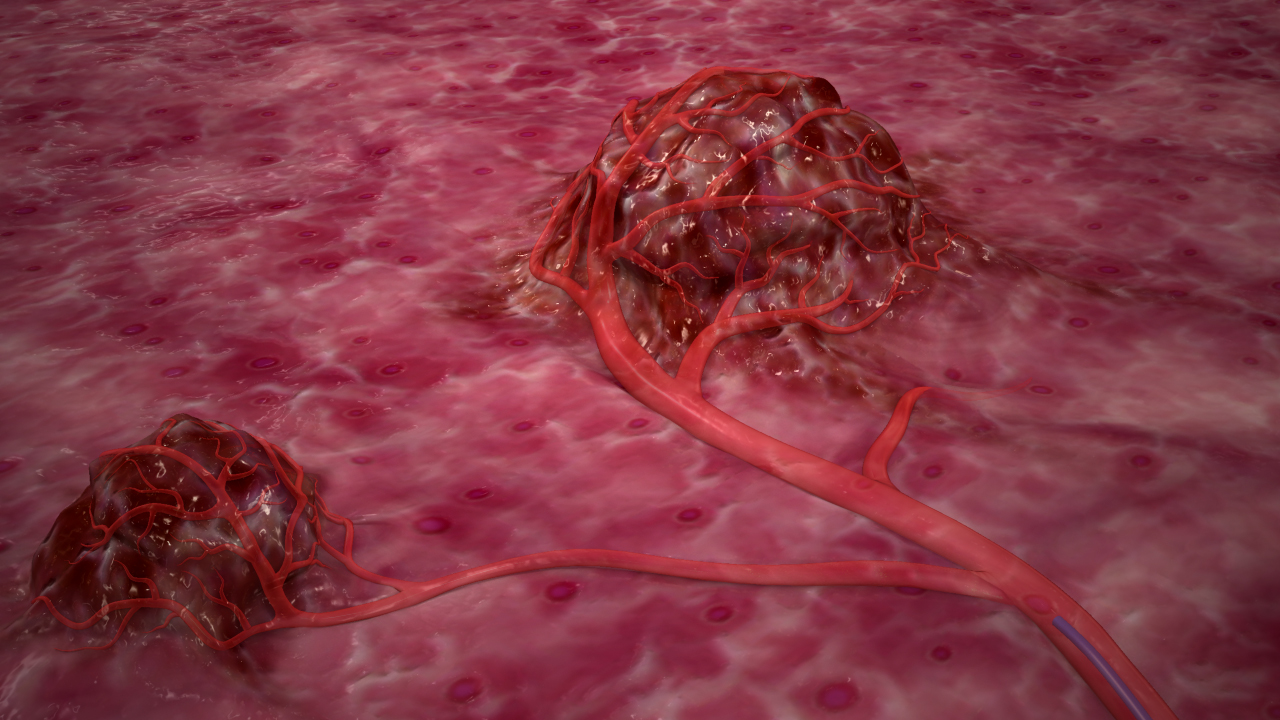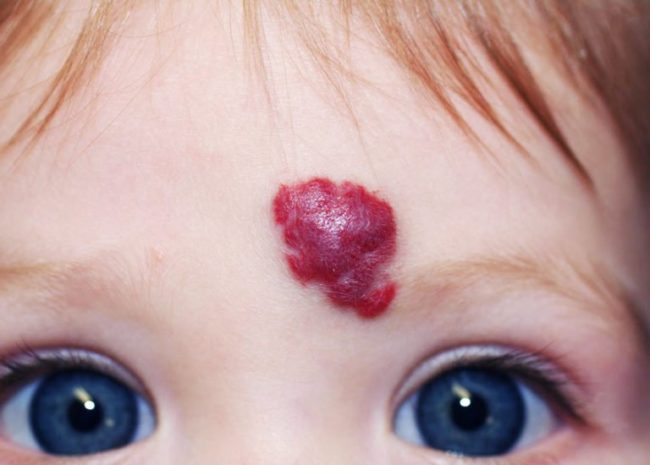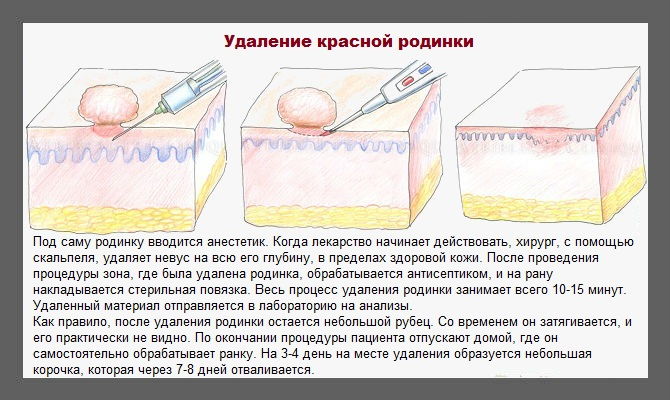People often notice red on the body of the neoplasm. They can be like tiny dot, or reach just giant sizes. Why do red moles grow and is it necessary to remove them? Let's try to figure it out.
Content
What do red moles mean?
By red moles (scientific name of angioma) involve small skin formations. They consist of epithelium, vessels, fragments of the lymphatic system. The cause of the pathology is defects in blood vessels and lymph.
Angiomas occupy an intermediate place between the skin of the skin and the tumor. They have not yet been very studied, but there is reason to believe that these moles are not dangerous for humans and in many cases are an innate ability of the body.
More often angiomas are observed in childhood and are spontaneous and temporary. It is noteworthy that before the occasion of the age of seven, they are self -destroyed. In adults, red moles on the body are localized in any areas, regardless of age. When pressed on them, they turn pale, and then return to a similar color.
It is important to know! Cases of excitement of angias into cancer are single. But doctors advise being more careful: if the angioma rapidly began to grow, changed color, bleed, you need to show it a dermatologist-oncologist.

Types of red moles on the body
Neoplasms are of different sizes, structures, coloring. They are divided into two types:
- red mole is convex (increases above the layer of the epidermis and it can be felt by your fingers);
- flat angioma (it is located in the skin ball).
Also, red moles on the skin are classified:
Doctors share angiomas into:
- Hemangiomas are a separate type of large convex angium. They are simply huge and reach more than 6 cm in diameter. Due to the risk of frequent trauma, they are removed.
- Lymphangiomas are a relatively rare type. These red dots are like moles, but differ in a modest size-1-3 mm. They are flat or resemble nodules that are easily compressed. They are localized under the armpits, in the groin, they can be seen even in the mouth.
Red moles in the photo:
Angiomas affect the skin, any tissues and organs. They are found even in the liver and brain. Normally, they are of a single character. If there are many of them, you need to look for a hidden pathology.
More often there is a simple and non -hazardous red mole on the face and scalp. Normally it is small, it has the shape of a ball, a crimson-blue. Less commonly, such moles affect the eyelids, genitals, nose. In 80% of cases, neoplasms affect the back, limbs, and, of course, the face.
Cavernous neoplasms of several moles, pierced by blood vessels and filled with blood, occur in the subcutaneous layers, affecting bone and muscle tissue.
Note! Disassembled localization of angioma is the head. The neoplasm is often damaged in the process of washing, drying and hair styling.
To distinguish a red mole from another neoplasm, you need to know its features:
- The angioma is painted in bright red, burgundy-blue, purple color. Any deviations are a sign of dysfunction.
- Angiomas are single, or merge into a large group. They should be located in one place, for example, in the neckline. If the angiomas cover most parts of the body, you need to look for the cause.
- The angioma occurs asymptomatic, that is, does not cause a person any uncomfortable sensations. It is painless, does not itch, does not bleed. The only discomfort is an aesthetic defect.

From what red moles appear
Red growths are more often observed in newborns. They are also found in adolescents and pregnant women, less often in other categories of the population.
The appearance of red moles in children
In babies, red formations are a consequence of the growth and transformation of tissues and systems of the body. There is also another theory of the appearance of angias in newborns: some doctors believe that viral diseases transferred by a woman during pregnancy contribute to their occurrence.

Causes of angioma in adults
Red moles in adults is a consequence of hormonal imbalance or problems of organs or systems.
Causes of Angiom:
- Cardiovascular pathologies.
- Violation of the digestive tract.
- Chronic course of infectious diseases.
- Gestational period.
- Incorrect assimilation of lipids.
- Pyelonephritis.
- Insufficient blood microcirculation in the tissues.
- Hormonal pathologies.
Some doctors justify the growth of red moles by the causes:
- Genetic predisposition.
- Abuse of tan.
- Shenlein-Genoch disease.
- Violation of the process of pigmentation of the skin.
- System red lupus.
- Autoimmune diseases.

How to remove red mole on the body
Only those neoplasms that began to show activity - itch, bleed, accelerate growth are subject to removal. Such symptoms increase onconality, but removal is only a measure of prevention, since red moles are practically not malicious.
It is advisable to excise red moles on the body of women and men located in the contact zone with linen, as well as on the head, which complicates the care of the hairstyle. In these zones, moles are often injured, so bleed, inflamed, can rot.
Important! The angioma before removal should be examined by a dermatologist to clarify its character.
Red moles on the body: treatment at the doctor
Modern dermatology offers such options for removing red growths:
- Surge with a scalpel. The procedure takes place quickly, in hospital conditions using local anesthesia. The surgeon removes education, imposes a seam and tells how to care for the wound. In this way, the growths on the face are not removed, since the risk of visible scarring is preserved.
- Laser burning. Simple and not traumatic treatment of a red mole. The removal passes in layers, so it is possible to get rid of even the deepest angias without surgical excision. Pre-make an anesthetic injection or apply an anesthetic gel directly to the angioma. Then they act on a mole with a laser, and it evaporates without a trace.
- Cauterization. The technique does not leave scars. To do this, use liquid nitrogen, radio waves, light rays. The growth is removed using a special device under local anesthesia. The seams are not applied, since the fabrics are cauterized at the cut site.
Note! The red mole in a child is removed by a surgical or laser method.
After excision, the moles is forbidden to wet the wound, visit the sauna and sunbathe. The place of removal of the growth is treated with special antibacterial agents, a bandage can be applied. After two months, these prohibitions are removed.
Reding red moles, folk methods
If you still decide to try to get rid of red moles, remember that only small growths can be treated without signs of inflammation and damage.
Do you have red moles? What to do - folk healing will tell:
- Honey. The natural product is applied to the spot and easily rubbed. The procedure is repeated up to 5 times a day and additionally once at night.
- Onion. Daily the angioma is lubricated with juice for at least 30 days.
- Black radish. The grated root crop is applied to red moles three times a day before they discolor them.
- Dandelion. The spine is cleaned and crushed, applied to the mole twice a day. The duration of treatment is up to two weeks.

Red moles: Are they dangerous?
Angiomas rarely have to be removed, since they are harmless to humans. Only under the influence of aggressive factors, for example, severe tanning and injuries, are individual cases of angioma degeneration into a malignant tumor.
The danger is also due to the fact that the angiomas located in the oral cavity on the eyelids, in auditory passages, tend to grow, which complicates the normal functioning of these organs.
Important! If you quickly grow a red mole, hurry to a dermatologist. This sign may indicate the oncological process.
Normally, the angioma does not itch. An exception is the period of pregnancy, when hormonal jumps provoke their itching. Therefore, if you are not pregnant, and the red mole is creepy, you will have to go to the doctor. During the diagnosis, a hormonal background will be examined, and, if necessary, a histological study of a piece of excised angioma.
Note! You can sunbathe with angiomas, but you should adhere to general recommendations, namely: use sunscreens and try not to burn.













Comments
a couple of years ago, there was no side of metrogils from the same problem, there were no side effects ...
I’m not a fan of peeling at all, it saves from acne of metrogil, it also smoothes it ...
Great article! ...
I take the second course of the Capsules Climafite 911. The tides went very quickly. It became calmer, irritability went away and I sleep well ...
i also noticed - it is worth nervous, everything immediately affects the face. Therefore, I try to avoid conflicts and unpleasant people. Of the creams, I like Miaflow from wrinkles - smoothes not only small wrinkles ...